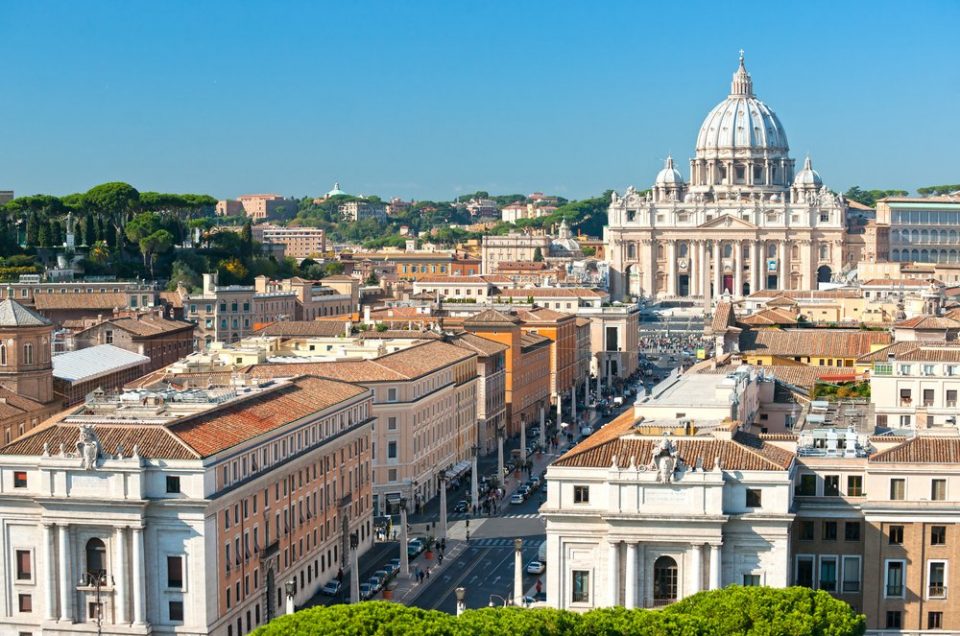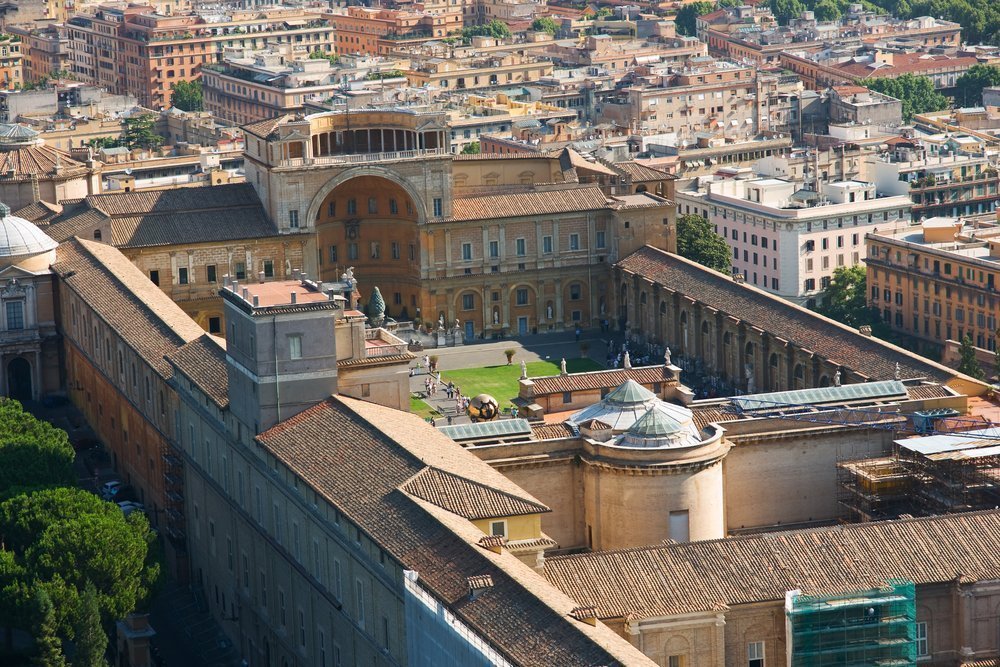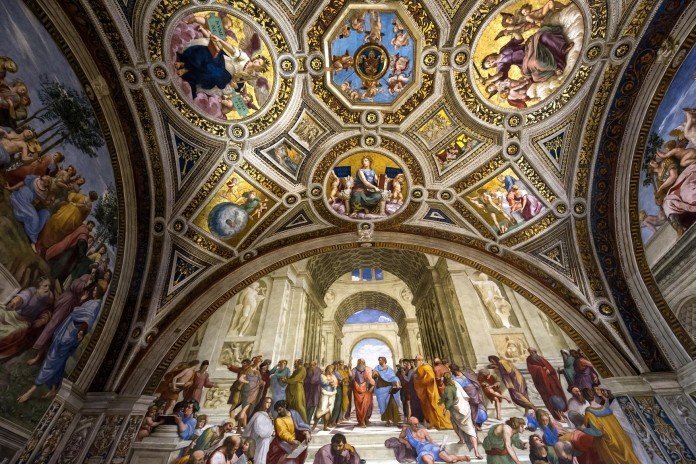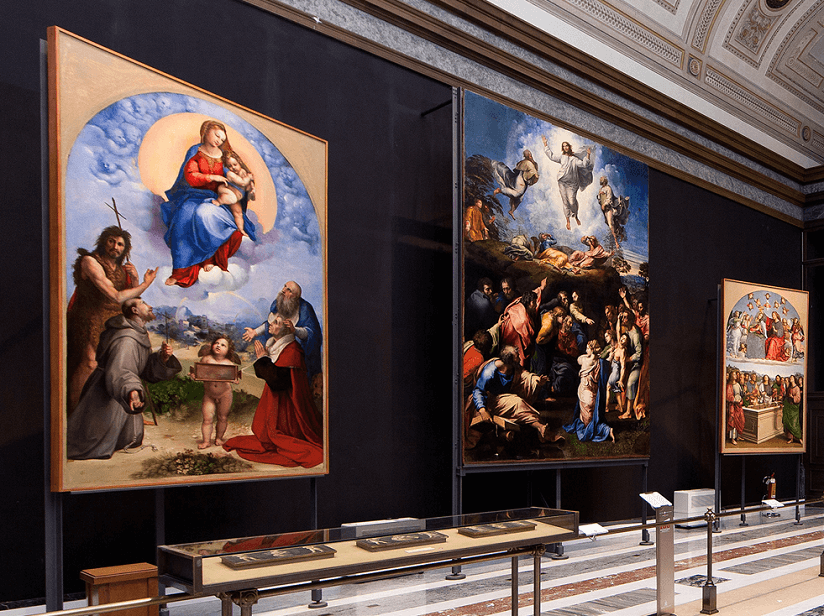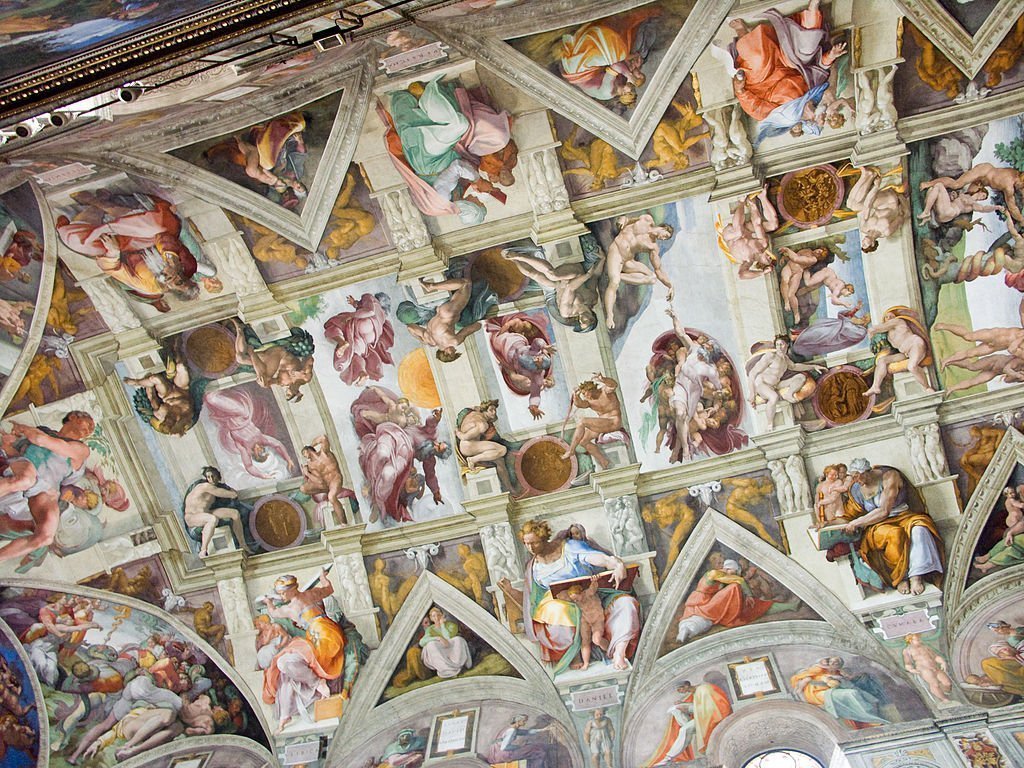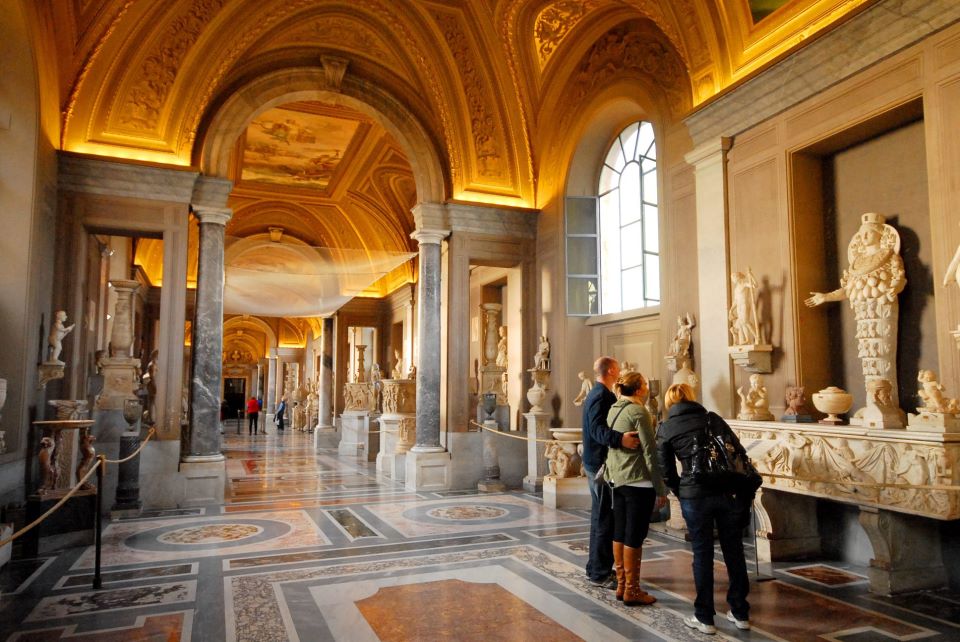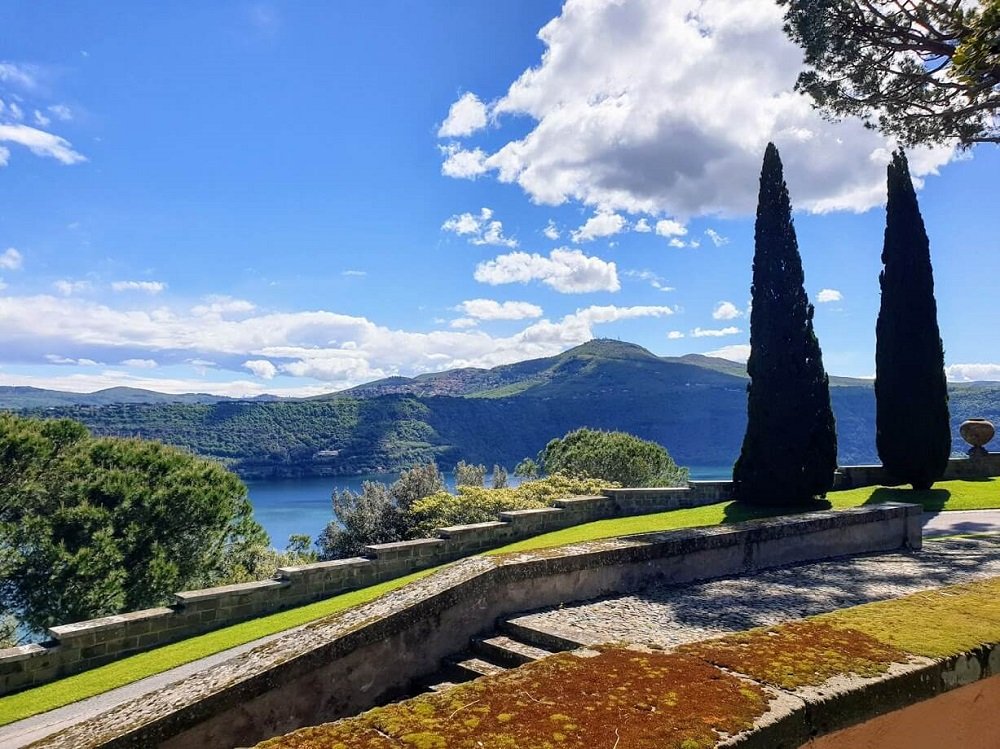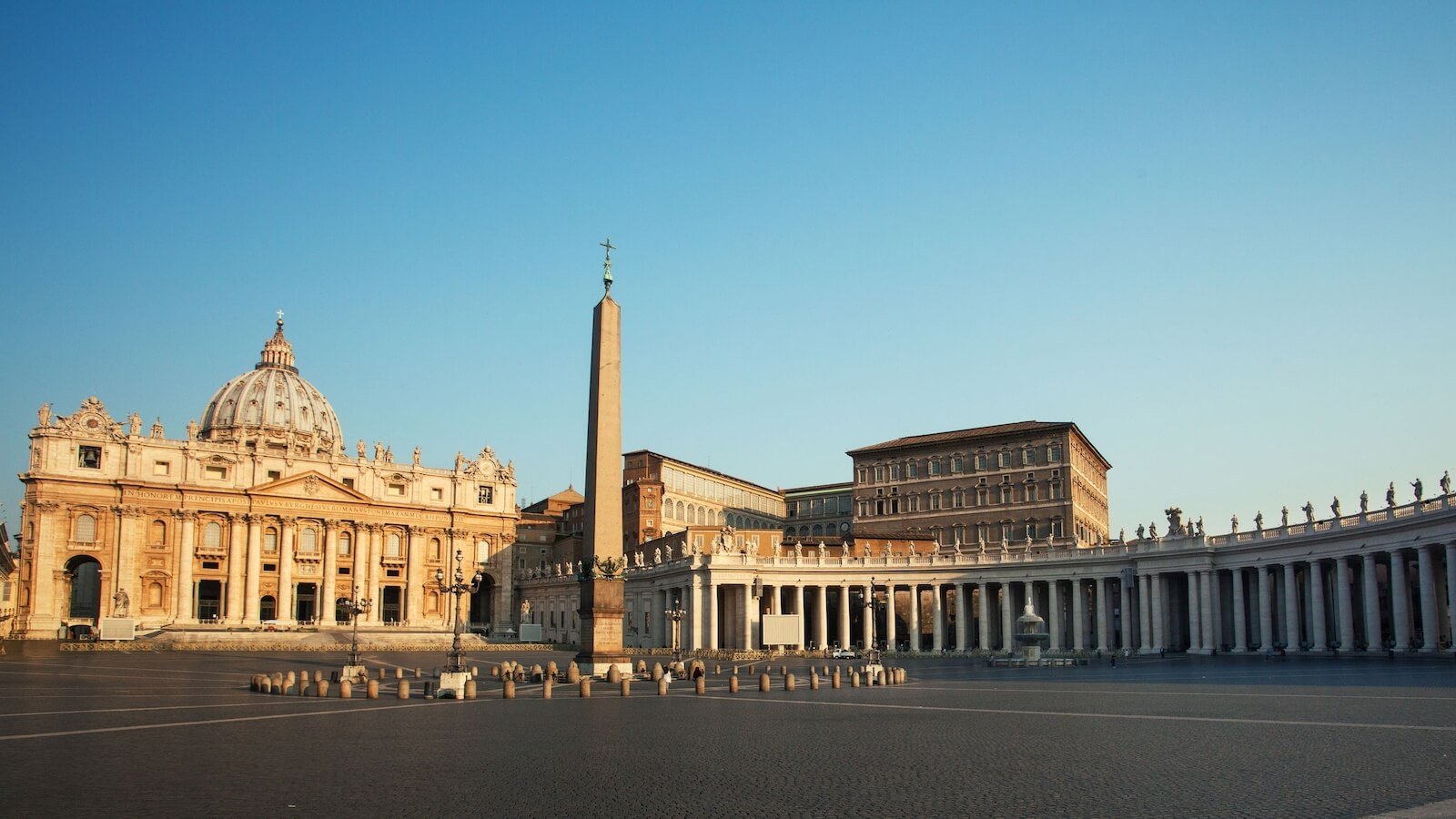Given its extraordinary collection of artwork spread throughout the over 4 miles of lavishly decorated rooms, galleries, and chapels, it is no surprise that the Vatican Museums welcome nearly 6 million visitors per year.
The 54 galleries throughout the Vatican Museums boast an unrivaled collection of masterpieces, amassed by its many Popes. In 1506, Pope Julius II started this significant anthology by acquiring the Museum’s first piece, a marble sculpture “Laocoon and His Sons”. Considered a hub of Renaissance treasures, the Museums offer a wide section of artworks, spanning from the 12th century to the 19th century.
→ Click here to see all of our Vatican Tours
Once inside, visitors are first greeted by Momo’s “Snail Staircase”, designed in 1832. This enormous spiral staircase leads its visitors into the truly unique interweaving maze of sculptures, paintings, tapestries, and artifacts. The Vatican Museums are made up of a series spectacularly decorated rooms, one more remarkable than the next.
The “Raphael Rooms” offer visitors an impressive collection of works by Raphael Sanzio. Comprised of four rooms, they include the Room of Constantine, Room of the Segnatura, Room of the Fire in the Borgo, and the Room of Heliodorus.
Perhaps Raphael’s most celebrated piece, the “School of Athens” is Raphael’s rendition of artists of his time as great philosophers – da Vinci as Plato, Michelangelo as Heraclitus, and even a self-portrait of Raphael himself. Completed in 1511, many scholars agree that the School of Athens is one of Raphael’s best works as it perfectly captures the ideals of the High Renaissance period.
Another feature of the Museums is the “Pinacoteca”. Designed by Luca Beltrami, this picture gallery was commissioned by Pius IX and completed in 1931. The Pinacoteca is overflowing with significant art, arranged chronologically throughout its eighteen rooms. While eventually returned, many of these important pieces were once stolen by the French Revolutionary commander Napoleon.
Key highlights of the “Pinacoteca” include Moretto’s “Madonna and Child” in Room III as well as Perugino’s “Decemviri Altarpiece” and Santi’s “Saint Jerome Enthroned” in Room VI. Interestingly, Room VIII includes a unique combination of paintings and tapestries, including Raphael’s “Madonna of Foligno”, “Crowning of the Virgin”, and “Transfiguration”. Also in Room VIII are a selection of extraordinary tapestries created by Flemish artisans, including the famous rendition of da Vinci’s “The Last Supper”.
The Sistine Chapel is a truly multi-dimensional artistic experience, adorned with masterpieces by Michelangelo, Perugino, Ghirlandaio, da Vinci, and Botticelli. Still used as a papal conclave today, the chapel was erected in the 15th century. Pope Julius II successfully convinced Michelangelo to design the ceiling of the Sistine Chapel in 1508. Completing the remarkable frescoes while standing, Michelangleo completed this crux of High Renaissance art within four years.
The ceiling is adorned with nine scenes from the Book of Genesis, including the iconic “The Creation of Adam”, which beautifully captures the outstretched fingers between Adam and God.
While largely a collection of Christian art, the Vatican Museums also has a “Hebrew Lapidary”, a collection of Hebrew inscriptions as well as archaeological excavations from Egypt and Etruria.
More contemporary gems can be enjoyed in a separate wing, the Borgia Apartment. Previously used by Pope Alexander VI, the “Appartamento Borgia” has over 600 pieces of modern artwork on display, including paintings and sculptures by Dali, Kandinsky, Chagall, and Gaugin.
In addition to Michelangelo’s famed frescoes adorning the Sistine Chapel and the great works of the Raphael Rooms, the Vatican Museums undeniably have an amazing treasure-chest of splendid masterpieces.
→ Click here to learn more about the Vatican Museums

